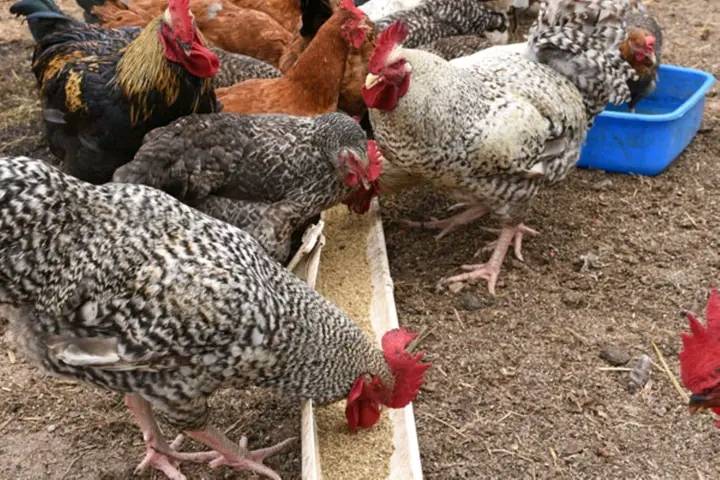INDIGENOUS CHICKEN FARMING
Chicken Housing
Building a chicken coop or house requires careful planning and consideration of the chickens’ needs. Here’s a step-by-step guide to help you build a chicken house/coop:
 Determine the Size: Calculate the number of chickens you plan to keep and determine the appropriate size for your coop. Each chicken requires about 3-4 square feet of space inside the coop and 8-10 square feet of outdoor space.
Determine the Size: Calculate the number of chickens you plan to keep and determine the appropriate size for your coop. Each chicken requires about 3-4 square feet of space inside the coop and 8-10 square feet of outdoor space. Select a Location: Choose a location for your coop that provides shade, protection from wind and predators, good drainage, and easy access for cleaning and maintenance. Ensure the area is well-drained to prevent waterlogging.
Select a Location: Choose a location for your coop that provides shade, protection from wind and predators, good drainage, and easy access for cleaning and maintenance. Ensure the area is well-drained to prevent waterlogging. Design and Materials:
Design and Materials:a. Sketch the Design: Create a rough sketch of your coop design, including the dimensions and features you want to incorporate.
b. Gather Materials: Purchase the necessary materials, such as lumber, nails/screws, wire mesh, roofing materials, insulation, and paint.
c. Build the Frame: Start by constructing the frame of the coop using the lumber. Cut and assemble the walls, floor, and roof according to your design.
 Ventilation and Insulation:
Ventilation and Insulation:a. Ventilation: Install vents or windows to ensure proper airflow and prevent condensation. Chickens need fresh air circulation to avoid respiratory issues.
b. Insulation: Depending on your climate, consider insulating the coop to provide warmth during colder seasons. Use insulation materials suitable for your region.
 Nesting Boxes:
Nesting Boxes:a. Build Nesting Boxes: Create nesting boxes for your chickens to lay eggs. Provide one nesting box for every 3-4 chickens.
b. Add Bedding: Line the nesting boxes with straw or shavings to create a comfortable environment for egg-laying.
 Roosting Bars: Install roosting bars for chickens to perch at night. Place the bars at least 2 feet above the floor and allow 8-10 inches of roosting space per bird.
Roosting Bars: Install roosting bars for chickens to perch at night. Place the bars at least 2 feet above the floor and allow 8-10 inches of roosting space per bird. Flooring:
Flooring:a. Base: Use a solid, easy-to-clean material for the base. Concrete or wood with linoleum are common options.
b. Bedding: Cover the floor with bedding material, such as straw, wood shavings, or sand, to absorb droppings and provide a comfortable surface.
 Security:
Security:a. Install Wire Mesh: Use sturdy wire mesh or hardware cloth to cover all openings, including windows and vents, to protect the chickens from predators.
b. Add Locks: Ensure all doors and access points have secure locks to prevent unwanted entry.
 Water and Feeding Systems:
Water and Feeding Systems:a. Install Waterers: Place waterers inside the coop, ensuring a constant supply of clean water for the chickens. Consider automatic or nipple waterers to minimize spillage.
b. Set Up Feeders: Install feeders in the coop, making sure they are easily accessible to the chickens but protected from pests.
 Finishing Touches:
Finishing Touches:a. Paint or Stain: Apply a suitable paint or stain to protect the coop from weather elements and extend its lifespan.
b. Check for Safety: Before introducing the chickens, inspect the coop for any sharp edges, protruding nails, or potential hazards.





